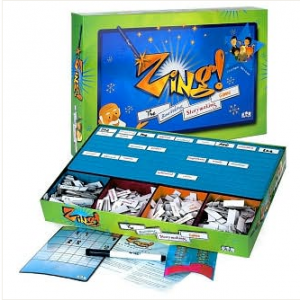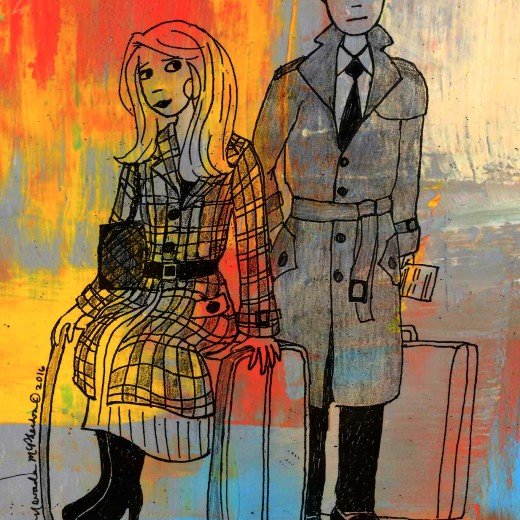Games and Contests: Creative Building Blocks for Writers by Wyatt G. Bessing
Welcome to our new monthly columnist at the Writer’s Fun Zone: Wyatt Bessing. Wyatt will be sharing is fun take on games, play, and writing. Please join me in welcoming him! And please comment below on your favorite writing game.
***
My morning begins with a game. Will I finish my journey from home to office in less than an hour? I’ll slip through the foggy dawn along the pastures of Sonoma County, zip across the dull suburbia of downtown, wind out between the rolling hills and glistening reservoirs of Marin, and finally climb from the tiny, historic village of Nicasio, up and down redwood studded mountainsides into San Rafael. I tell myself I do this to avoid traffic on the ever-congested Highway 101, but the real reason is a bit more selfish: I simply enjoy the game of discovery and speed.
Sitting down with my first student for the day, I open a new game, Zing!: The Bewitching Storymaking Game. We take turns placing words like magnetic poetry magnets, slowing creating a story of a boy playing violin as his mother watches scornfully. We gradually reveal her belligerence and anger. At the end, we discover the source of her rage – our young violinist has forgotten to unload the dishwasher. All the way through the game, the student has been learning to use advanced vocabulary and constructing a story full of emotion and suspense. She discovers (and I’m reminded) that a good story requires that information be withheld from the reader until the critical moment. This is the power of games: This concoction – competition, interaction, and immersion in a world with different rules than our own – creates a successful learning experience.
Rules – the key aspect of any game – put restrictions on the writing exercise, but promote flexibility as we imagine how to follow them in the most creative way possible. They are a set of colorful building blocks, freeing the mind to play by eliminating the fear of creating something from nothing. The first short story I ever published, “Turtle and the Sky Bowl,” was written in response to The Bare Bones Story Exercise. The rule: Write a story of no more than five hundred words, made entirely of plot (something interrupts a character’s routine, there are at least two plot twists, and there is a definite resolution). That single rule inspired my creativity to produce a story that has been reproduced countless times on children’s literary and educational sites.
Why do so many writers bemoan their procrastination most of the year, yet successfully complete a novel of 50,000 words during November as part of National Novel Writing Month? The reason is simple: The contest sets a specific, feasible, yet ambitious goal. This is another game I use with my students. Set a personal word count goal and try to reach it within a month, whether it’s 2,000, 10,000, or an entire novel full of words. Pretend every month is NaNoWriMo. We rise to high expectations; everyone enjoys a challenge.
Natalie Goldberg’s freewriting exercise is popular for the same reason. Exciting and approachable, it’s a ten-minute freewrite, pouring out your emotions and senses without thinking, without editing, without stopping, just letting your hand sweep and swoop across the page in response to a prompt. “I remember….” Go. Write. Don’t stop. Ten Minutes.
I use a game approach in my everyday writing practice, writing in two-hour increments, always one and sometimes two sessions each day. I set a goal for myself. Can I edit this chapter, write this draft, or outline this scene?
Many schools and districts are beginning to focus on designing educational games specifically tailored for their classes and students. The official blog of the Department of Education recognizes award-winning game-based learning systems and instructors, so obviously the movement is catching on. I would bet that these students find their studies engaging and interesting. Studies have always show that the more positive and enjoyable learning is, the more knowledge is successfully acquired. When I teach writing, and when I write, I aim to keep the process playful and fun.
Here are some game ideas to get you started, whether your goal is inspiring yourself or teaching others to write more creatively and productively. For complete descriptions of these and many other games, visit my website at www.wyattgbessing.com
And remember to have fun with your writing!
www.magneticpoetry.com: Visit this website for a quick creativity burst. Draw three or four tiles and write a story or poem that uses these words. Time limit: One hour.
10 Minute Outpouring: Open a dictionary and touch the first word you come to. Write about that word, opening your senses and emotions to get as close to it and your own life as you can. Don’t stop. Just keep your hand moving. Time limit: 10 minutes.
The Two Hour Goal: Can you write an entire article in two hours? I wrote this first draft in that amount of time. How about editing a piece you’ve already completed? How about generating a hundred new ideas with brief plot sketches?
The Bare Bones Story: 500 words maximum. A character’s routine is interrupted; there are two plot twists; and there’s a definite conclusion. Hold the adjectives, adverbs, and description unless absolutely necessary!
***
Wyatt Bessing is a writer, writing coach, and learning specialist. His stories and essays have appeared in Bedtime-Story.com, Outsider Ink, national educational assessment materials, and in the anthology Dance, Human Rights, and Social Justice. Through his workshops, website, and blog at wyattgbessing.com, he guides new and experienced writers in crafting more effective, expressive, and striking work. During the day, he works at Star Academy in San Rafael, teaching reading and comprehension skills to students with learning differences in elementary through high school. He lives in Santa Rosa, CA with his wonderful girlfriend and co-creator, Sarah Laugtug.








